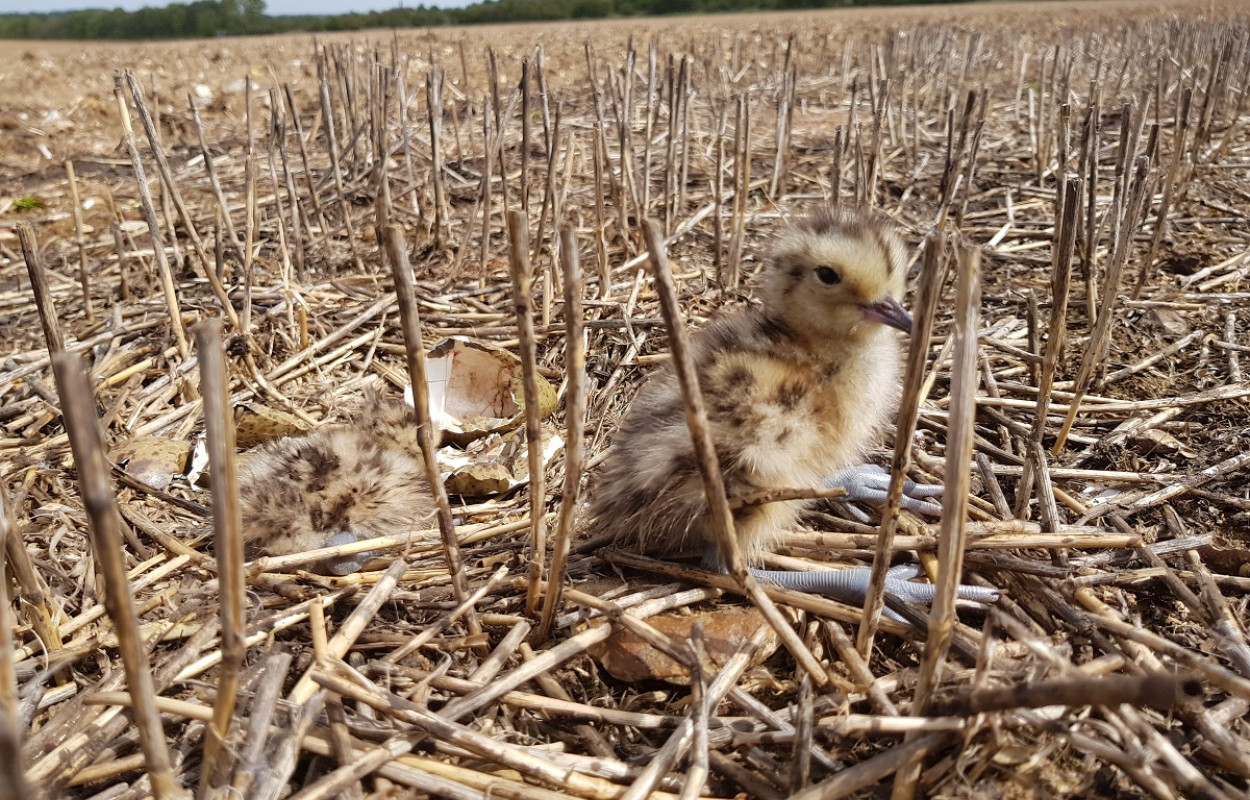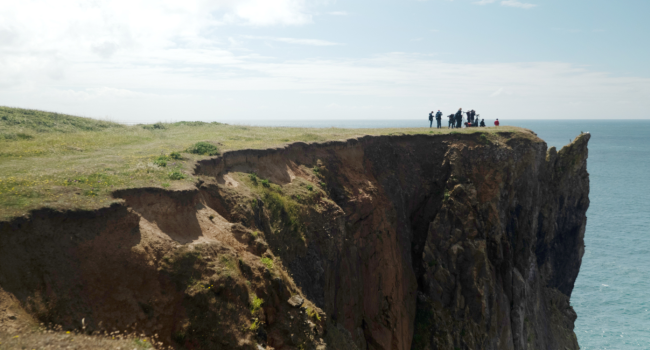Nest survival of threatened Eurasian Curlew (Numenius arquata) breeding at low densities across a human-modified landscape

Author(s): Ewing, H., Franks, S., Smart, J., Burton, N. & Gill, J.A.
Published: December 2022
Journal: Ibis
Digital Identifier No. (DOI): 10.1111/ibi.13180
In the UK, Curlew populations have declined by more than 48% in the last 25 years, so their management is a pressing conservation issue. Although Curlew are secretive, particularly when incubating eggs, we know that their decline is being driven by low breeding success. Studies focusing on this stage of the life cycle are extremely useful to conservationists aiming to boost Curlew populations.
In this collaborative study between BTO and the University of East Anglia, scientists investigated whether Curlew nest survival varied across Breckland, a human-modified but diverse region of Eastern England. They monitored Curlew nesting attempts to identify the years, sites and management conditions (arable crop, fenced grassland, unfenced grassland or ground-disturbance plots) that promoted low or high rates of nest survival. They also used ibutton temperature loggers to investigate the time of day at which nest predation occurred, seeking to determine whether nests were being predated by birds (diurnal) or mammals (crepuscular/nocturnal).
Data were collected from 136 nests across eight sites and three breeding seasons. Overall, the mean probability of a nest surviving incubation was 25%. Predation was linked to nest failure in 86% of cases, with the majority of these failures occurring during the night. Nest survival was consistently low across years but did vary slightly between sites. There was no evidence to suggest that this was related to management conditions.
As most of the Curlew nest failures were caused by predation, which primarily occurred during the night, boosting Curlew nest survival is likely to require actions to reduce the impact of mammalian predators, such as Foxes.
A tool commonly used to boost wader nest survival is predator-exclusion fencing. Increasing the number of Curlew nests enclosed by fencing in Breckland could potentially contribute towards increasing the number of chicks hatched in the region. Fencing could be targeted in areas already supporting management actions to boost breeding wader populations, such as ground-disturbance plots (managed to encourage breeding Stone-curlew but also used by nesting Curlew), or at the few remaining sites supporting high breeding densities (two small sites in Breckland support 45% of the breeding Curlew monitored during the study).
Different measures are required to support Curlew in the wider landscape, outside fence areas. These include the establishment of collaborative stakeholder networks, and integration of Curlew-friendly policies into agri-environment schemes are likely to be of particular importance in maintaining breeding populations, given the generally sparse, low-density distribution of Curlew (< 1 pair per km2 across 95% of the study area).
More work is needed to trial management actions to boost Curlew nest survival, but we also need a greater understanding of the conditions required to support chick growth and survival, which is where efforts to boost nest survival should be prioritised. With such measures in place, we can hope to safeguard the future of Breckland’s Curlews.
Abstract
Targeted management actions to boost key demographic rates can help to restore rare and localised populations but are increasingly required to stabilise or reverse declines of formerly common and widespread species. Many breeding wader populations across Europe are declining because of unsustainably low rates of productivity, and the conservation tools designed to boost wader breeding productivity have been most effectively used for semi-colonial species within protected areas.
Targeted management for wader species that breed at low densities across human-modified landscapes, such as the rapidly declining Eurasian Curlew Numenius arquata, is likely to be more challenging. Here, we quantify variation in curlew nest survival in order to explore how management could be targeted to boost this key component of breeding productivity. Up to 80 pairs of Eurasian Curlew were monitored annually between 2019 and 2021 in eight locations across Breckland, eastern England, where nesting densities range from < 1 to ca.7 pairs per km-2.
For 136 nests across grassland- and arable-dominated sites, the majority of failure (86%) was caused by (primarily nocturnal) predation and the mean probability of surviving incubation (PSI) for all hatched or predated nests (127) was ca. 0.25. Nest survival showed little annual or seasonal variation but did vary slightly between sites, however, this spatial variation was not clearly related to management conditions or nest concealment at these sites.
Fencing to exclude mammalian nest predators can be effective for waders, but too few Eurasian Curlews currently nest within fenced areas in Breckland to produce observable effects. Fencing the few sites with high nesting densities could potentially double the number of chicks hatched each year within the study area, but landscape-scale actions to reduce predator impacts on nests and chicks are likely to be needed to maintain breeding numbers in the wider countryside.









Share this page